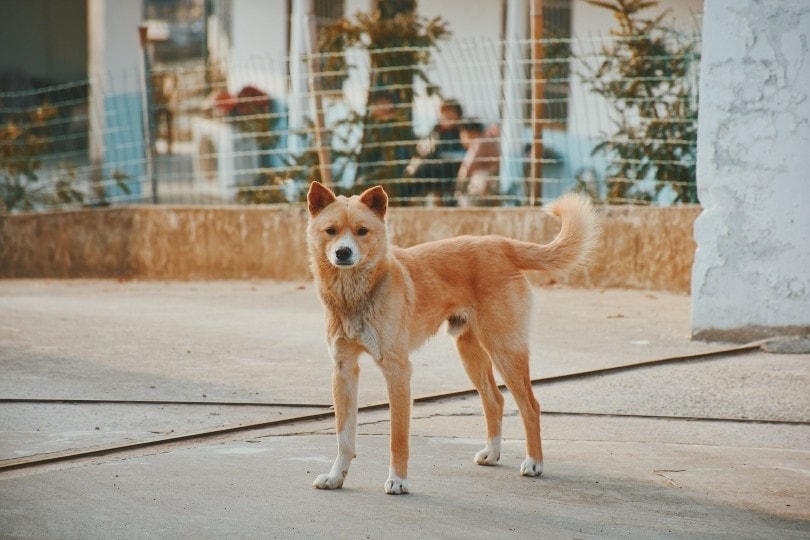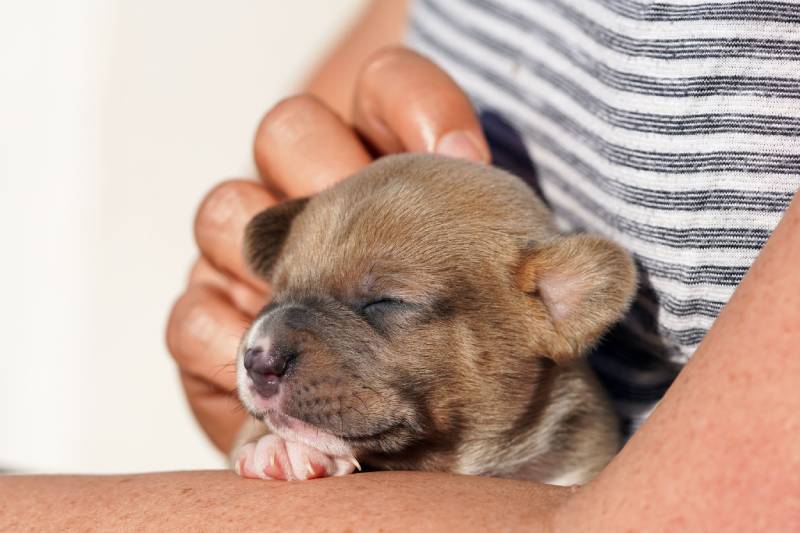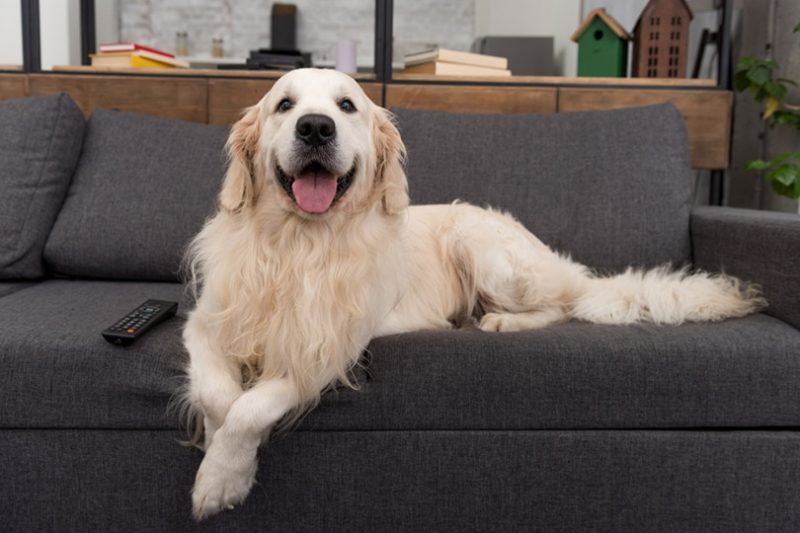Maltese vs Shih Tzu: Main Differences (With Pictures)

Updated on
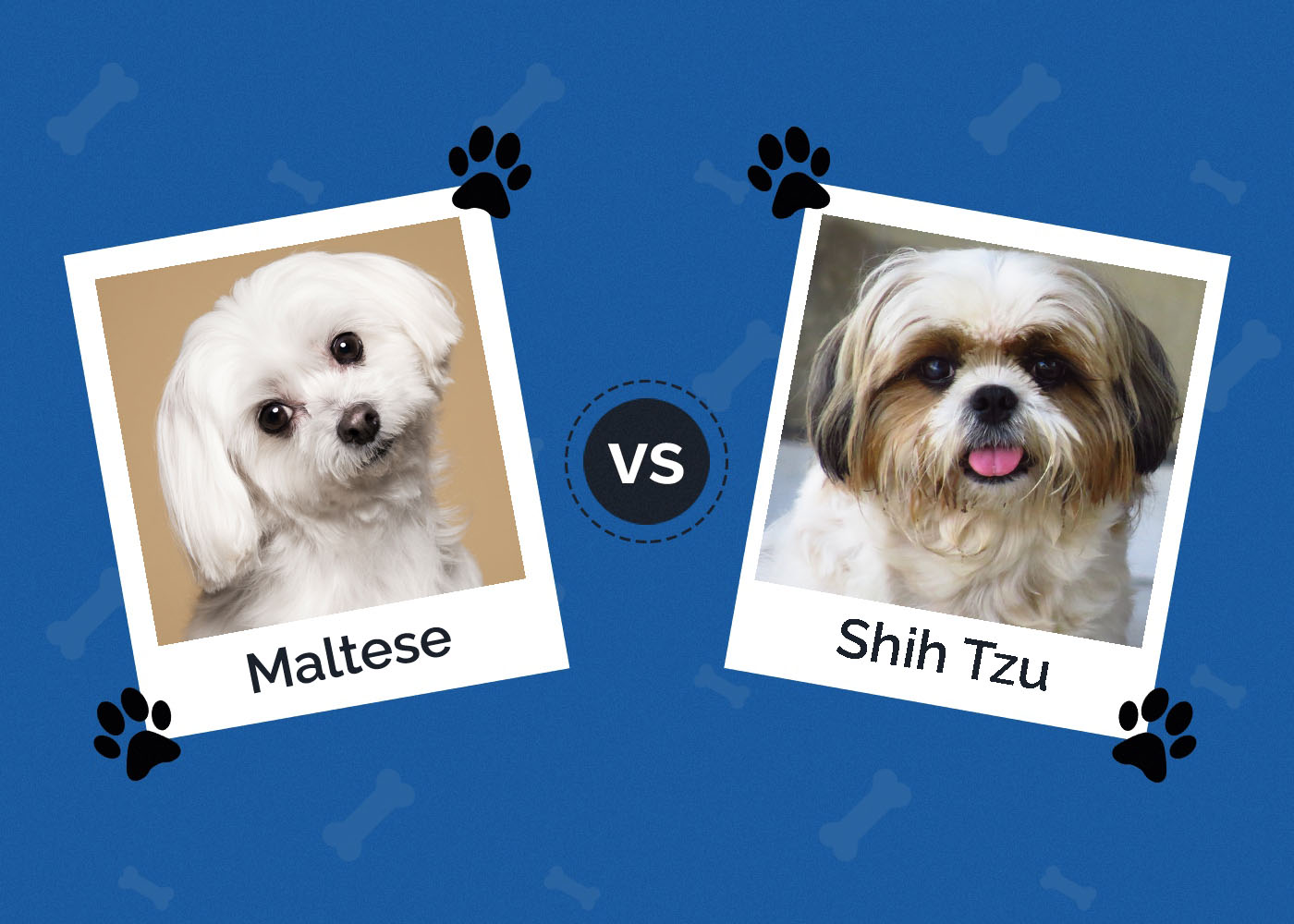
Click to Skip Ahead
The Maltese is a confident and gentle breed that makes a great companion to any family. Their adorable looks, small bodies, and luscious white coats are enough to attract any first-time owner looking for a lap dog. This breed excels not only as a companion but also as a therapy dog and competitor in dog sports.
The name “Shih Tzu” means “little lion,” but this dog breed is anything but ferocious. They were historically bred as companions and do a great job at it. If you are looking for a small and sweet companion who can adapt to apartment living, sit on your lap for a cuddle, and shower you with unconditional love and attention, both these breeds will make ideal pets. However, some characteristics may make one more suitable than the other, so let’s examine the dogs to determine which one is right for you.
Visual Differences

At a Glance
- Average height (adult): 7–9 inches
- Average weight (adult): Under 7 pounds
- Lifespan: 12–15 years
- Exercise: 20–30 minutes per day
- Grooming needs: Moderate-high
- Family-friendly: Yes
- Other pet-friendly: Often
- Trainability: Stubborn but willing
- Average height (adult): 9–10.5 inches
- Average weight (adult): 9–16 pounds
- Lifespan: 10–18 years
- Exercise: 1+ per day
- Grooming needs: Moderate
- Family-friendly: Yes
- Other pet-friendly: Often
- Trainability: Very trainable, loves learning tricks
Maltese Overview
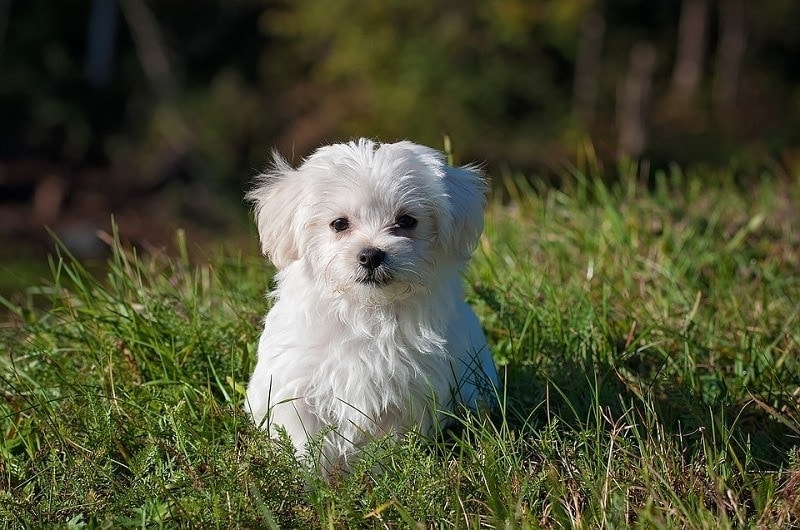
Personality
The personality of the Maltese matches their adorable looks. They are sweet, loving, and gentle, as well as playful and energetic. They’re not hesitant around strangers and love being held.
Training and Exercise
The Maltese, like all dogs, requires early socialization to ensure it develops into a well-rounded dog. Because the Maltese are so people-oriented, they respond well to training and positive reinforcements such as tasty rewards, praise, and cuddles.
This breed is usually active indoors, so they don’t require much exercise to keep them in shape. Your Maltese will enjoy a regular walk or a playdate outside and will continue to be playful as they age.
Health & Care
Maltese have a lifespan of about 12–15 years. They are generally healthy, but like all breeds, they are prone to specific health issues.
Patella Luxation: A luxating patella, also known as a dislocated kneecap, is a common condition in which the kneecap (patella) moves sideways, away from its normal position at the front of the knee.
Progressive Retinal Atrophy (PRA): PRA is a group of degenerative diseases that affect photoreceptor cells in the eyes.
Hypoglycemia: Hypoglycemia, also known as low blood sugar, is where there are low glucose levels in the bloodstream, which means the dog’s body does not have enough energy to function.
Portosystemic liver shunt: The portal vein is an important blood vessel that enters the liver and allows toxic materials in the blood to be detoxified. When your dog has a liver shunt, the portal vein is not connected correctly, so blood bypasses the liver and returns directly to circulation throughout the body.
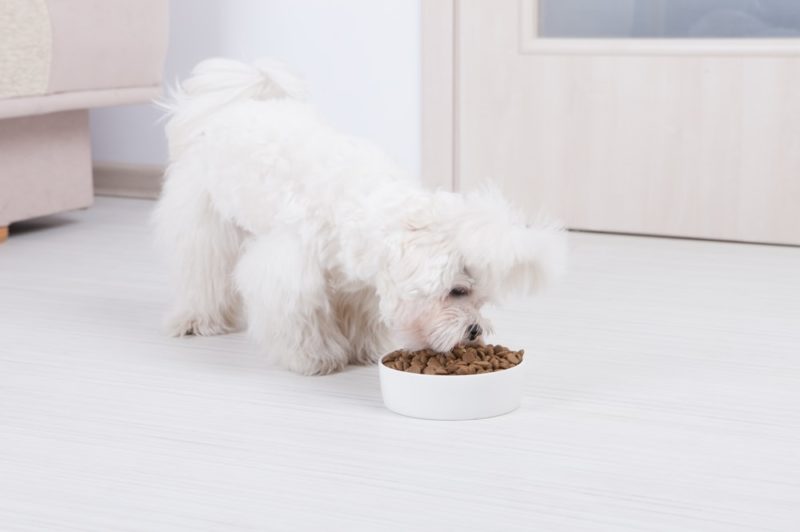
Dog Shaker Syndrome: Shaker syndrome is a condition in which a dog’s entire body shakes. This happens when the part of the brain responsible for coordinating and regulating voluntary muscular movement becomes inflamed.
Collapsed Trachea: A collapsed trachea causes a dog to cough severely, usually during exercise, eating or drinking, or when there is pressure on the trachea.
To prevent your Maltese from becoming overweight, measure its food and feed it twice a day rather than leaving food out all the time. It is recommended to provide your Maltese 1/4 to 1/2 cup of high-quality dry food per day, divided into two meals.
Grooming
Maltese lack the undercoat that many breeds have and do not shed much. Your Maltese will need a quick daily brush, even if they are cut short, to keep their fur clean and prevent matting. The beautiful white coat of a Maltese can get dirty easily and requires frequent baths.
If your Maltese’s nails don’t wear down naturally, trim them once or twice a month, they’re too long if you can hear them tapping on the floor. Most Maltese owners struggle with ear and face staining, which usually starts when your puppy is 4 to 5 months old. To avoid or reduce tear staining, clean your Maltese’s eyes with warm water every day and wash its beard after eating.
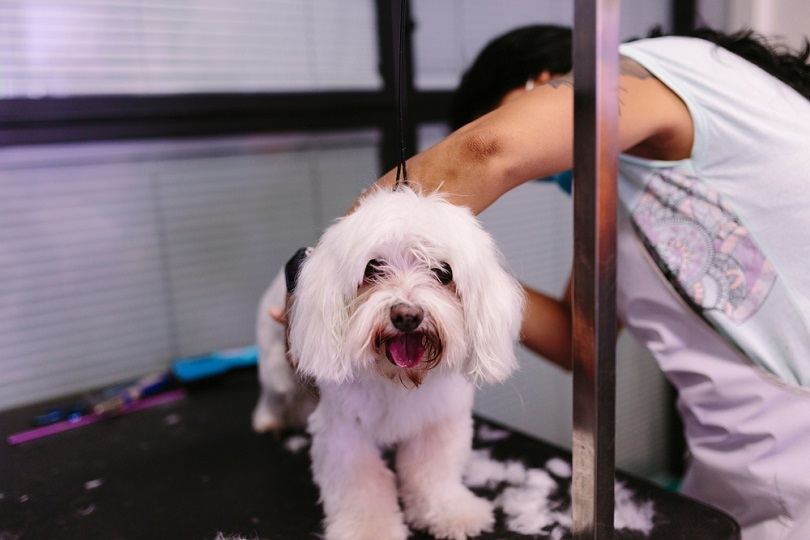
Suitable for
The Maltese is an excellent indoor dog that thrives in apartments and small spaces and is a great choice for first-time owners. They are ideal lap dogs for anyone looking for an affectionate companion. Not only does this breed shine as a companion, but they also make excellent therapy dogs and competitors in dog sports such as agility and obedience.
They are also low shedders and are great pets for allergy sufferers. Although Maltese are great with children, they are not ideal for families with toddlers under the age of 3 since they can unintentionally injure the little dogs.
- Loving and affectionate
- Energetic and playful
- Easy to train
- Don’t require too much exercise
- Great for small apartments and first-time owners
- May be easily injured with very young kids and may snap
- Their coat can get dirty quickly
- Prone to health issues
Shih Tzu Overview
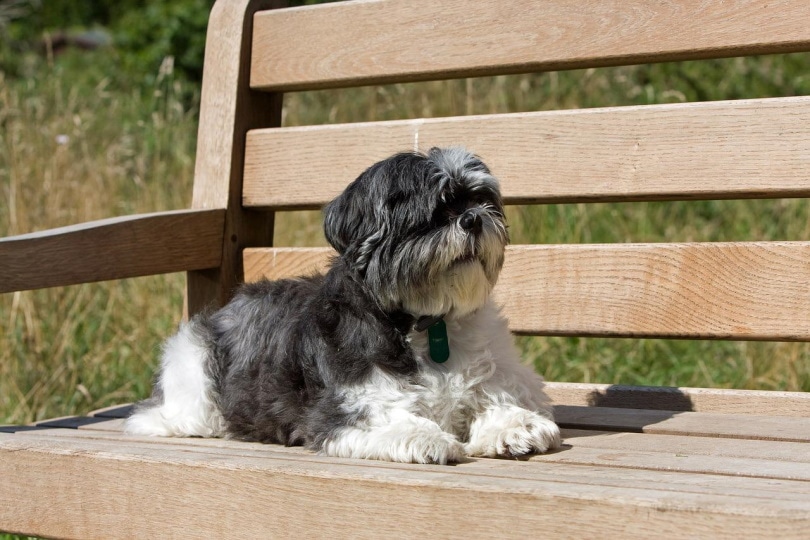
Personality
Shih Tzus were bred to be companions, and that’s precisely what they are. They are known for their cheerful personalities, which are lively and welcoming. They love the company of their humans, whether it’s a nap on their owner’s lap or a stroll in the park. Shih Tzus are happiest with their families, giving and receiving attention.
Training and Exercise
Shih Tzus are not highly active dogs and will be fine with a short walk once a day. They are content to play with their toys and wander around the house, which can provide them with a small amount of exercise. Avoid exercising a Shih Tzu in hot, humid weather, as this breed is prone to heat stroke.
Like other dogs, Shih Tzus need to be socialized early, as they may grow up to become timid around other people. Because of their high intelligence, they are easy to train. Successful training should include plenty of patience, consistency and positive reinforcement.
Health & Care
Shih Tzus have a lifespan of about 10–18 years. They are generally healthy, but like all dog breeds, they are susceptible to some conditions:
Juvenile renal dysplasia (JRD): This condition occurs during the development of the kidneys in the womb. Dogs affected by JRD will have increased concentrated urination, thirst, vomiting, lethargy, and weight loss, which can lead to kidney failure between the ages of 6 weeks and 4 years.
Canine hip dysplasia: Hip dysplasia is a condition that occurs in dogs during their developmental stage. The hip joint becomes loose, resulting in pain and dysfunction. Over time the cartilage and hip bone may deteriorate, resulting in arthritis and limited mobility.
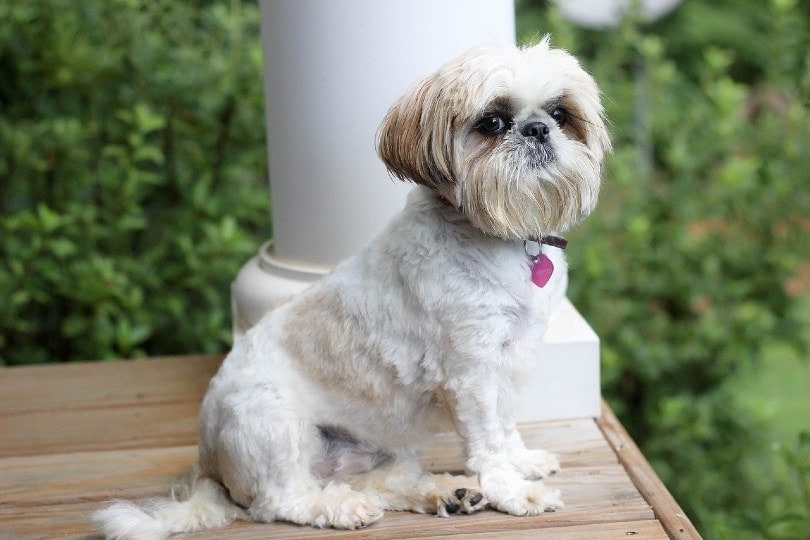
Umbilical hernia: An umbilical hernia is a hole in the muscle wall near the belly button which allows the contents of the abdomen to pass through.
Retained baby teeth: A retained baby tooth stays in place even though the permanent tooth has emerged. As a result, the permanent teeth may develop in an irregular position, resulting in an incorrect bite pattern.
Shih Tzus, like the Maltese, are also prone to patella luxation, portosystemic liver shunts, and hypoglycemia. A Shih Tzu puppy might need four to six meals per day, and when they reach adulthood, it is recommended that you feed your Shih Tzu at least three times per day. They should be fed a high-quality, well-balanced diet.
Grooming
The gorgeous double coat of a Shih Tzu will require a regular grooming routine. The frequency of grooming visits varies depending on the size and type of coat of your Shih Tzu. However, once a month or every six weeks is recommended. Brushing your Shih Tzu’s coat daily, as well as bathing as often as once a week, are required to prevent tangles.
Shih Tzus’ ears must be checked and cleaned regularly, and they will sometimes need hair plucked from the ear canal. Your dog’s nails should be clipped every two months or more.
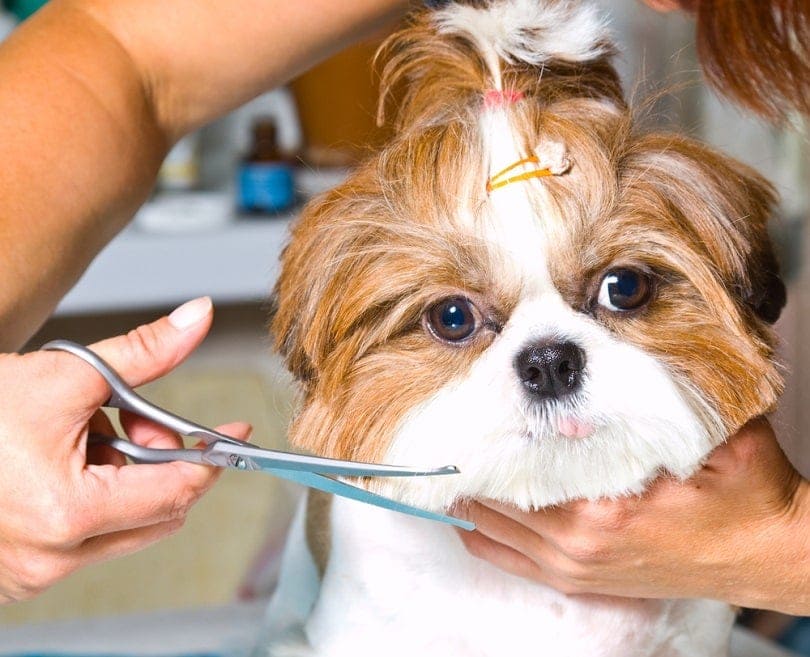
Suitable for
The Shih Tzu requires a lot of love and attention daily and generally loves to be with its owners. Shih Tzus get along well with people of all ages and other pets. They are usually not concerned about where they live as long as they are with you. They are adaptable and can live in small apartments as well as large country homes. While they enjoy playing outside, they should always be kept indoors. If you want to keep the long-flowing coat, you’ll need to put in some time for grooming. If you are a first-time owner looking for a lovable lap dog, the Shih Tzu is ideal.
- Excellent companions
- Get along with children and other pets
- Not highly active
- Highly intelligent
- Long lifespan
- Suitable for apartments and first-time owners
- May require major grooming
- Prone to heat stroke
- Prone to health issues
Which Breed Is Right for You?
Both the Maltese and the Shih Tzu make great companions. They do not require a lot of exercise and are both suitable for apartment living. If you are a first-time owner, both breeds are suitable, and you will love the companionship that they offer.
If you do not have a lot of time for grooming, a Maltese may be a better choice. The Shih Tzu has a double coat that needs attention and may aggravate allergy sufferers. Both breeds are prone to health issues, but the Shih Tzu is more so than a Maltese, so that is important to keep in mind when considering the medical needs of your dog.
While both are great with children, the Maltese is less sturdy and weighs less than the Shih Tzu, making it an unsuitable dog breed for families with young toddlers. Toddlers may easily step on the dog, drop it, or embrace it too tightly. Shih Tzus are more robust and more suitable for children, but children must always be taught proper care toward their pets. Whichever dog you choose, you can be sure that both these breeds will bring you years of love and companionship.
See also:
- Pekingese vs Shih Tzu: Which One Is Right for Me?
- Pomeranian vs Shih Tzu: Pick the Right One for You!
Featured Image Credit: (L) Kang Sunghee, Shutterstock | (R) Dieny Portinanni, Shutterstock


